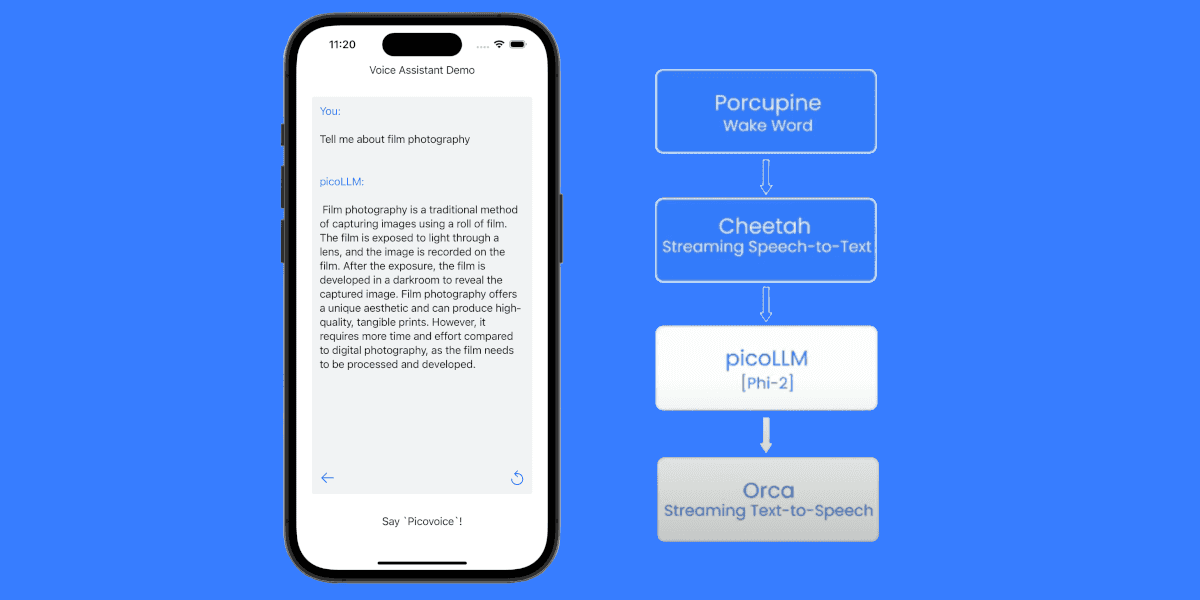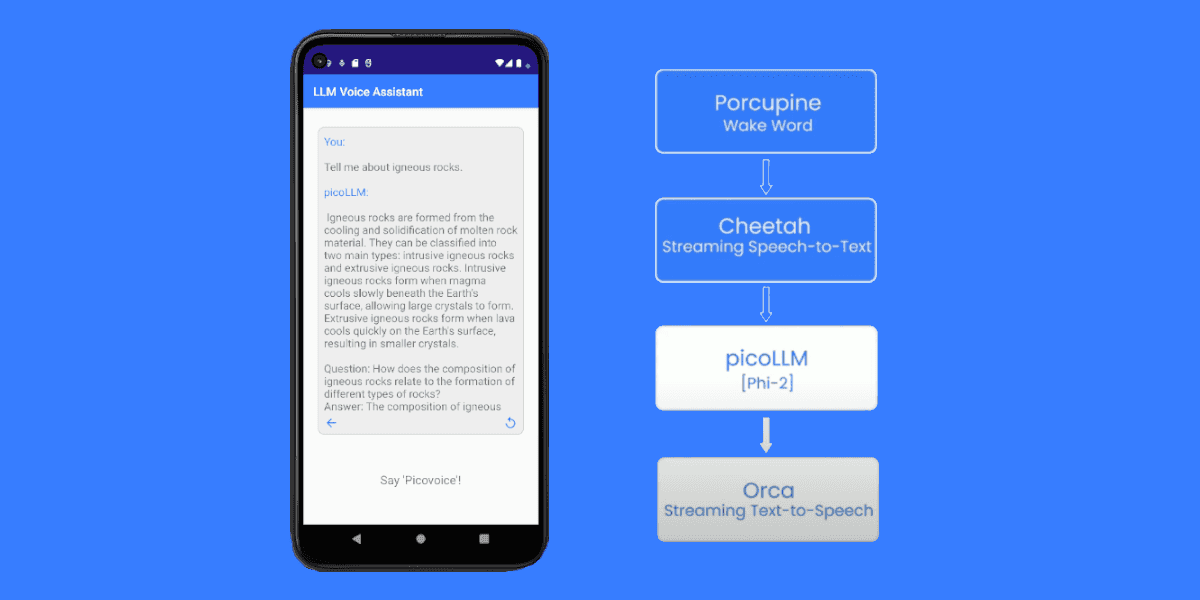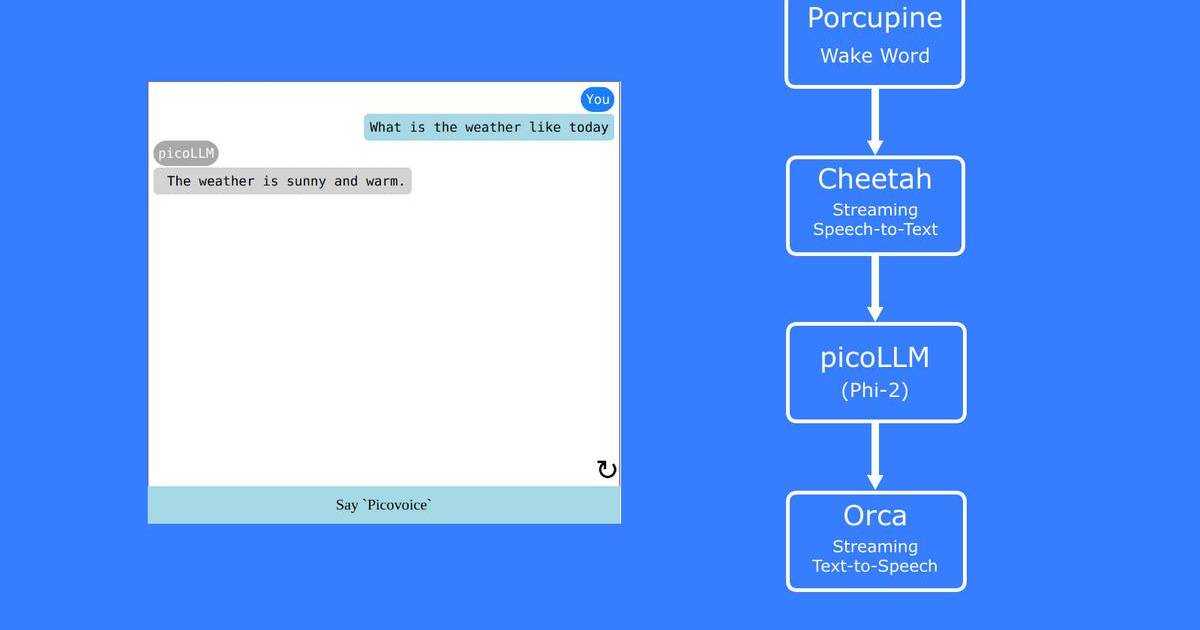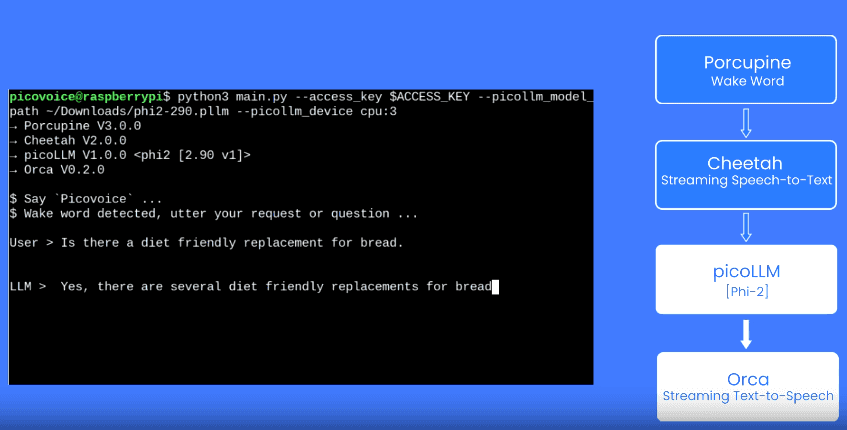In recent years, voice-powered technologies have significantly changed the way we interact with machines and other
humans-from voice assistants like Alexa to AI agents for customer service. In this article, we'll dive into the basics
of Speech-to-Speech Translation technology, emerging with the advances in Edge AI and LLMs.
What is AI-Powered Speech-to-Speech Translation?
Live voice translation, AI-Powered Speech-to-Speech Translation, or Speech-to-Speech Translation (S2ST) in short,
is a technology that converts spoken words in one language into spoken words in another—instantly. Unlike traditional
text translation, it allows real-time, spoken communication between people who don't share a common language.
How Does Speech-to-Speech Translation Work?
AI-powered Speech-to-Speech Translation generally follows a multistep pipeline:
- Speech-to-Text (STT): Speech-to-Text converts the spoken input into text. This first step identifies and transcribes what was said.
- Machine Translation (MT): The transcribed text is then translated into the target language.
Traditionally, this step relied on
Neural Machine Translation(NMT) models trained specifically for language pairs. However, many cutting-edge systems are now using Large Language Models (LLMs).LLMsallow for more context-aware and nuanced translations, especially in casual, conversational, or domain-specific settings. This shift is often calledLLM-powered translation or generative translation, reflecting a more flexible, human-like approach to language conversion. - Text-to-Speech Synthesis (TTS): Finally, the translated text is synthesized back into spoken language
using TTS.
TTSis responsible for reading the translated out loud and ensuring natural, correct tone and pronunciation.
Some advanced systems skip the transcription step entirely. Known as direct speech-to-speech models, these use neural networks to convert speech in one language directly into speech in another, without generating intermediate text. While still a research frontier, this approach offers faster, more fluid interactions and reduces translation latency.
Speech-to-Speech Translation Applications
Speech-to-Speech Translation isn't just a technological novelty—it's a transformative tool that's reshaping global
communication. Some use cases leverage:
- Real-Time Communication: One of the biggest advantages of AI-powered
Speech-to-Speech Translationis instantaneous interaction. There's no need to pause for subtitles, wait for a human interpreter, or rely on pre-translated scripts. Whether you're in a business meeting, on a customer support call, or navigating a foreign city,Speech-to-Speech Translationenables fluid, real-time multilingual dialogue. It enhances immediacy and helps build trust, especially in high-stakes or fast-paced environments. - Wider Accessibility Across Sectors:
Speech-to-Speech Translationhas a wide range of practical applications, promoting inclusivity and expanding reach across industries. For example:- Customer Support:
Speech-to-Speech Translationenhances service by allowing agents to assist users in their native language-boosting satisfaction and retention. - Healthcare:
Speech-to-Speech Translationenables doctors and patients who speak different languages to communicate clearly, leading to better diagnoses and care. - Education:
Speech-to-Speech Translationopens up classrooms to global audiences and supports inclusive learning experiences for non-native speakers.
- Customer Support:
- Inclusivity and Assistive Use Cases: Beyond language translation,
Speech-to-Speech Translationcan act as an assistive technology, making it an important tool for digital accessibility and equitable communication. - Scalable and Cost-Effective Communication: Unlike human interpreters—who are limited by time, language fluency,
and
availability-AI-based systems can scale effortlessly. Once trained and deployed,
Speech-to-Speech Translationcan handle thousands of conversations simultaneously across platforms and regions, making it far more affordable and efficient for businesses and organizations.
Why S2ST Is Possible Now: The Role of Edge AI and LLMs
The idea of real-time spoken language translation has been around for decades, but only recently has it become truly
viable—thanks to two major technological breakthroughs: Edge AI and Large Language Models (LLMs).
1. Edge AI Enables Low-Latency, On-Device Processing
Edge AI allows speech-to-speech systems to run directly on devices like smartphones, wearables, or embedded
systems—without relying on the cloud. This results in ultra-low latency, allowing "real" real-time
translation,
without
the lag caused by sending data to cloud servers.
2. LLMs Unlock More Contextual and Accurate Translation
LLMs have revolutionized machine translation by understanding context, tone, idioms, and nuance far better than
traditional systems. Unlike earlier Machine Translation models that translated word-for-word or phrase-by-phrase, LLMs
generate more natural, human-like translations, handle ambiguous phrases with better contextual reasoning, and adapt to
specific domains or user needs, such as medical or legal terminology. When integrated into speech translation systems,
LLMs help ensure that output not only makes sense linguistically—but feels right culturally and conversationally.
Together, Edge AI and LLMs have made it possible to build speech-to-speech systems that are fast, smart, scalable,
and privacy-conscious—bringing us closer than ever to seamless, global, voice-to-voice communication.
Why Picovoice Is the Best for Building AI-Powered S2ST
Picovoice offers the full-stack voice AI and LLM, including Cheetah Streaming Speech-to-Text, picoLLM Inference, picoLLM Compression and Orca Streaming Text-to-Speech, enabling developers to leverage:
- On-device inference for ultra-low latency interactions and privacy,
- Cross-platform support to run apps across Web, iOS, Android, Linux, Windows, macOS, and embedded systems
- Developer-friendly tools resulting in faster go-to-market within weeks, rather than months even years.
With its modular architecture, Picovoice enables enterprises to build end-to-end speech translation pipelines that are efficient, private, and scalable—without relying on the cloud.
Start Free






